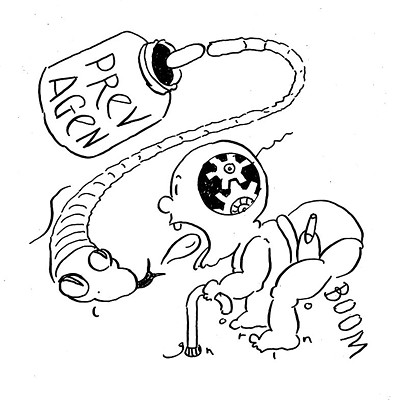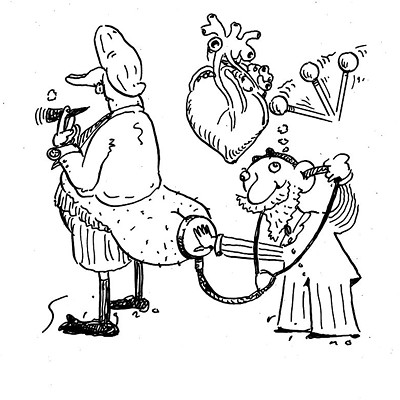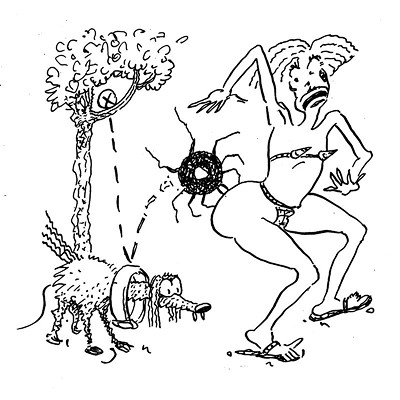I found something online about a man in Canada who’s cured cancer using hemp or marijuana oil and says it’s able to cure even terminal cases. Is this for real? If so, what the heck—the cure for cancer has been here all along? —Amy Spears
THINK about your question for three seconds, Amy, and riddle me this: if marijuana actually fought cancer, wouldn’t someone have noticed a massive drop in malignancies back when the teens of the ‘60s hit late middle age? We’d have 20 million more baby boomers puttering around suburbia, and makers of adult diapers would now be enjoying record profits.
Instead, cancer is projected to be the number-one cause of death in America by 2030, even as the nation’s love affair with weed rages on. None of which is to say that chemicals in marijuana won’t ever prove to be medically useful, but I personally wouldn’t opt for a Phish concert over chemotherapy just yet.
The guy you’re talking about is, I’m guessing, Rick Simpson, a crusader for the health benefits of cannabis oil. Simpson, whose medical training apparently consists of 25 years maintaining the boilers at a Nova Scotia hospital, claims that ingesting the stuff and/or rubbing it on the skin can remedy anything from diabetic ulcers to cervical cancer (no words of advice for topical application in such cases, however). According to Simpson, he’s cured his own skin cancer and treated many hundreds of other “patients” besides. If seriously ill people feel they’ve gotten some relief this way, I’m not going to tell them they haven’t.
Nonetheless, there’s still this thing called the scientific method.
In fairness, Simpson’s not alone in supporting this theory. Rather a lot of research has purported to show the medical value of marijuana, but most of it was conducted between the 1840s and the 1920s. This was a period during which the medical community also thought cocaine could cure tuberculosis, so conclusions drawn in those days should probably be taken lightly.
Anyway, this enlightened era ended in the early 30s, when a wave of state and federal statutes made marijuana illegal throughout the U.S. Since then, studies investigating its theoretical benefits have been extremely scarce—only 6 percent of recent scientific articles on cannabis have dealt with possible therapeutic use as opposed to potential for harm.
This may be because no one can get their hands on the goods: all marijuana used in American research is produced on the University of Mississippi campus and tightly controlled by the National Institute on Drug Abuse, an organization whose name may tell you something about its ideological bent vis-à-vis weed. Walk around any university medical or psych lab and you’ll find dozens of flyers looking for paid research subjects who are “already habitual marijuana users,” but you’ll rarely find any offering to pay you and provide your supply.
As a result, a lot of the scientific research is based on rats, using synthetic cannabinoids to mimic the effects of weed. Because it’s not done on humans (except illegally), it’s difficult to extract too much from such research. Even still, there’s some pretty compelling stuff out there. Here’s how it works:
Endocannabinoids are a group of compounds (lipids, to be precise) naturally produced in the brain during certain types of neural activity—mostly having to do with appetite, pain sensation, mood, and memory, but also relating to cardiovascular tone, immunity, movement, and reproduction. When you introduce plant-based cannabinoids like THC into your system, they mimic these endocannabinoids and appear to thus affect the same areas. The beneficial effects of weed on pain and appetite are sufficiently well accepted that medical marijuana is legal in 23 states for cancer and HIV/AIDS patients, and the synthetic forms of THC known as dronabinol and nabilone are FDA-approved to fight the nausea that accompanies chemo.
More excitingly, though, increasing cannabinoid levels have in fact been found to reduce tumor growth in mice in several different trials, by both inducing cancer-cell death and preventing proliferation, in almost all types of cancer cell tested.
Let’s be very clear: this doesn’t mean that smoking weed or eating it or rubbing yourself with it will get rid of a tumor. The endocannabinoid system is extremely delicate, and adjusting it incorrectly can actually stimulate tumor growth—Simpson may have been aggravating his skin cancer even as he was treating it. But there’s definitely something interesting going on here.
Researchers are also looking into how fiddling with the endocannabinoid system can alleviate seizures. I won’t bother going into the mechanics here, epilepsy being arguably even more complicated than cancer, but it’s enough to know somebody’s working on it.
Other studies are focusing on Parkinson’s, Huntington’s, and multiple sclerosis, because of the way endocannabinoids affect movement.
Will Rick Simpson be remembered someday as a visionary? We’ll see. For now, he’s apparently encouraging sick people to screw around with their neurological function without bothering too much about science.
But serious investigations into endocannabinoids in general do look promising. A long-term study on the health of undergraduate “research assistants” at the Ole Miss weed farm might prove informative as well, but then again I’m no scientist.

























